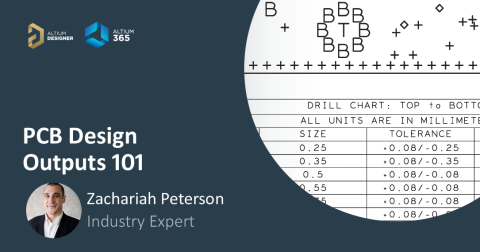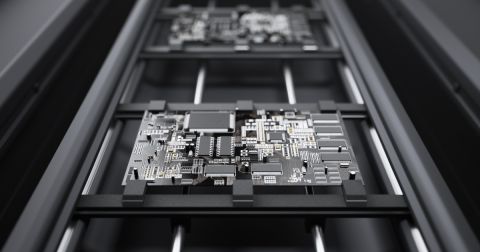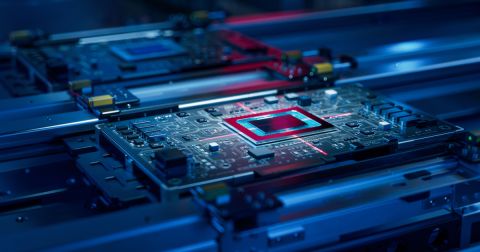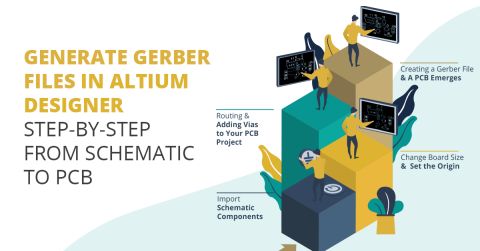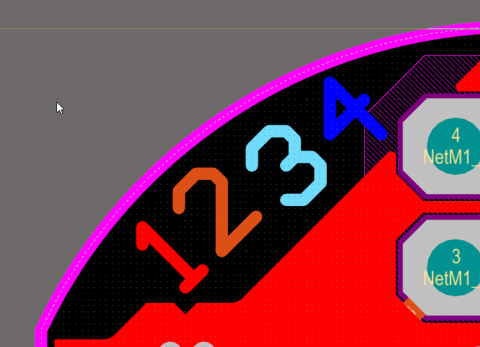A PCB Layout Review Checklist Gets You to Manufacturing Quickly

From what I’ve heard in some of my favorite podcasts, successful people keep a lot of to-do lists. Likewise, PCB designers can ensure their own successful manufacturing run when they keep a PCB design review checklist. After you send your design data over to your manufacturer, their engineers will go through your design with a fine-tooth comb, looking for anything that could reduce yields or anything that appears as a discrepancy between design files and your Gerber/netlist data.
Once the final design checks and sign-offs are complete, your design is ready to hit the fabrication line. If you did some homework before and during design, you’ve probably implemented the best DFM practices and provided plenty of documentation for your manufacturer. However, you can get through manufacturing quicker and prevent any redesigns, if you know what your manufacturer will check in your design. Let’s look at some of the common points manufacturers look for in a design review so that you can get your boards into production quickly.
Your PCB Design Review Checklist: Do You Know What You Don’t Know?
Different manufacturers have different capabilities, turnaround times, and volumes they can accommodate. There are, however, some common points any manufacturer should check before your board enters production. If your manufacturer does not check some of the basic points outlined here, then you might consider choosing a different company. With that being said, here are some important points you can expect your manufacturer to perform before fabrication and assembly.
A Complete DFM Analysis
The list of DFM issues can be a bit long, but any designer should keep the following DFM aspects on their PCB design review checklist:
- Component spacing: Parts and connectors should not be placed too close together in a layout as this can cause problems for automated pick-and-place machines.
- Drill bit sizes: It’s best to opt for a single drill size where possible, or at least a smaller number of drill sizes. Using too many drill sizes increases board fabrication costs.
- Pad sizes: Pad sizes in your Gerber files need to be compared to the component footprint in the layout.
- Pads or traces connected directly to copper pour: While this is an electrically functional design choice, this is a common cause of uneven heating during reflow soldering, leading to tombstoning. This can be a simple mistake by a designer or a deliberate design choice that ultimately affects manufacturability.
- Acid traps: Traces routed at acute angles can allow etchant to get trapped in the corner due to surface tension, although this has been somewhat solved through the use of newer etchant solutions.
- Missing or thin solder mask between pads: This can result in bridging during reflow soldering, which can short two pads or pins on a component. This is one common mistake that can be spotted by simply turning on your solder mask layer during a final review.
Design for Testability
Another aspect of DFM is design for testability, or DFT. Unless you are producing a single prototype or a test coupon, you’ll want to have your manufacturer test your boards as they come off the assembly line. Ensuring testability is its own topic; you’ll want to ensure you’ve designated specific test points and that you’ve included any required validation structures for your application in your board. You should also consult with your manufacturer to ensure these test points and structures are accessible by a flying probe tester or bed of nails tester.

End-of-Life Components
Designers and manufacturers should take time to check whether their desired components will go obsolete. This requires working with a 3rd party supply chain management tool or checking distributor/component manufacturer websites. The better solution is to use design tools that give you updated supply chain information directly from distributors within your design software.
Discrepancies Between Your BOM, Your Netlist, and Your Schematic
One of the most common errors seen during a PCB design review is a discrepancy between these three pieces of documentation. This is common when multiple designers collaborate on a new project, and frequent changes are made by multiple parties. Eventually, someone forgets to synchronize something or compile the project, an old BOM/netlist gets marked as the newest BOM/netlist, reference designators get changed without being synchronized to the BOM/netlist, or some other mistake occurs.
This is understandable, especially if your team is trying to get to the production line quickly. However, it is also preventable if you use the right design software. Sub-standard design tools force you to manually compile a BOM, or they force you to manually execute synchronization between your BOM, netlist, schematics, and PCB layout. Eventually, someone forgets to do this, and this can cause incorrect information to be sent to the fabricators.
The best design software for ensuring all your design, assembly, and component information remains synchronized, works in a unified design environment. In this type of environment, the underlying design engine automatically synchronizes your design data across your schematic, layout, BOM, Gerber files, and any other documentation required for production.

Want to Save Time? Do a PCB Design Review in the Cloud
Today's PCB design software helps expedite many design tasks needed to create high-quality layouts and manufacturing documentation, but many designers still rely on email chains and chat programs like Skype to complete a PCB design review. There's a faster way to complete a PCB design review: use Altium 365's cloud platform. Every Altium Designer user has access to an Altium 365 Workspace, allowing them to store and share their design projects in a managed cloud environment.
Best of all, Altium 365 is accessible within Altium Designer; you, your manufacturer, and your design team can open, inspect, modify, and release projects for fabrication without using an external PCB design review application. Here are some of the important tasks that Altium 365 makes easy:
- Share your in-progress and finished projects with collaborators and your manufacturer
- Compare Gerber file revisions within Altium Designer or in your web browser
- Migrate your component libraries, quickly import components into new projects, and create new components from old symbols and footprint
- Inspect all design documents in your web browser or by opening shared projects in Altium Designer
- Control user access to all projects through a secure platform.
With the layout and schematic design tools in Altium Designer®, you can easily address all the standard items on your manufacturer’s PCB design review checklist. Any important DFM requirements can be defined as design rules in Altium Designer. These design rules are then checked automatically as you create your board, rather than being checked at the end of your design. You can quickly identify DFM violations and correct them early.
Once you're ready to share your projects with collaborators and prepare for manufacturing, use Altium 365, the industries only cloud-connected PCB design platform. Now you can download a free trial of Altium Designer and learn more about the industry’s best layout, simulation, and production planning tools. Talk to an Altium expert today to learn more.

